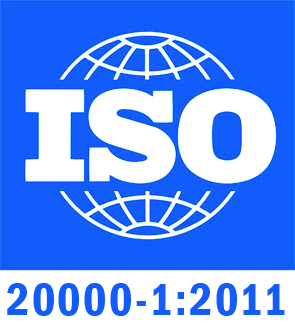ISO IEC 20000-1:2011



ISO/IEC 20000 was released in 2005 based on the IT infrastructure library best practice framework, and updated in 2011. ISO/IEC 20000-1:2011 is a service management system (SMS) standard. It specifies requirements for the service provider to plan, establish, implement, operate, monitor, review, maintain and improve an SMS. The requirements include the design, transition, delivery and improvement of services to fulfil agreed service requirements.
ISO 20000-1 is the specification for Service Management designed to improve management operations and techniques. These best practice requirements were developed to enhance the initiation, implementation and maintenance of IT service management in any organization. to meet their constantly evolving business needs, organizations have to adopt increasingly advanced facilities at the minimum cost. But with a spike in their dependency on support services and a diverse range of technologies, including computers and computer networks, they spend too little time planning, training, reviewing and working with customers.
Ensure that organizations focus on the implementation of a set of integrated processes and solutions that are appropriate, suitable and effective in meeting the needs of the business processes, the customers and the users they serve.
Establish an on-going culture of continual improvement and learning within an organization, providing a target to achieve and maintain. This leads to continual improvement in the quality of IT services provided and increased business and customer confidence in the service provider and their ability to deliver.
Enable organizations to internally assess their processes and activities against international standards as a method of identifying and implementing improvements.
Increase the rate of change and the productivity of staff and the use of their skills and expertise. This in turn leads to reduced long-term costs and a reduced risk of being unable to meet business objectives.
Enable organizations to adopt a structured approach to service management based on best practice guidance, allowing them to better understand their business and their needs, their roles and their processes. This leads to an improved reputation, relationships, inter-working and communication with their business and customer contacts.
To be independently, externally audited for compliance using a scheme and standard that is internationally recognized and respecte